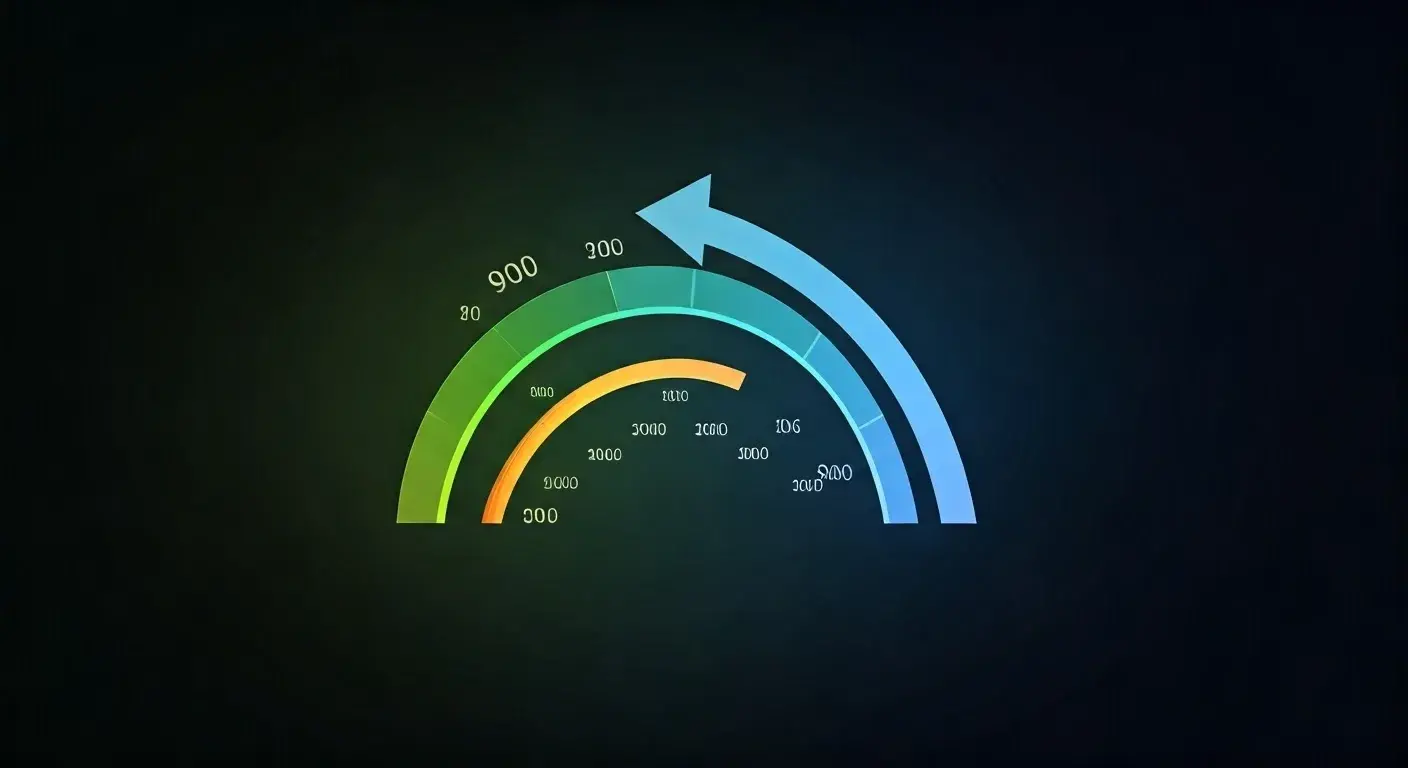-
Posted on: 15 Jul 2024

-
Understanding the timeline for credit repair with Lexington Law is crucial for setting realistic expectations. While no definitive "fix" date exists, this guide delves into the typical duration, factors influencing it, and what you can anticipate in 2025.
Understanding Lexington Law's Credit Repair Process
Lexington Law is a well-established credit repair organization known for its legal approach to disputing inaccuracies on credit reports. Unlike DIY methods, they employ a team of paralegals and attorneys to challenge negative items with credit bureaus and creditors. Their process typically involves an initial consultation, credit report analysis, and then the strategic disputing of questionable information. This legal framework is designed to leverage consumer protection laws, such as the Fair Credit Reporting Act (FCRA), to your advantage. The goal is to identify and remove inaccurate, outdated, or unverifiable information that is dragging down your credit score. This could include late payments, collections, charge-offs, bankruptcies, or even identity theft-related errors. Their methodology is systematic, focusing on sending dispute letters and following up with the credit reporting agencies (Equifax, Experian, and TransUnion) and the original creditors. The effectiveness of their service hinges on the ability to prove that the information reported is indeed erroneous or violates consumer rights.
The initial phase involves gathering your credit reports from all three major bureaus. Lexington Law then meticulously reviews these reports to pinpoint potential issues. This is a critical step, as the success of their intervention depends heavily on identifying valid grounds for dispute. Once potential inaccuracies are identified, they formulate a strategy to challenge these items. This often involves sending formal dispute letters to the credit bureaus. Under the FCRA, credit bureaus have a legal obligation to investigate these disputes within a specified timeframe, typically 30 days, though this can be extended to 45 days if new information is provided by the consumer. Lexington Law's expertise lies in navigating these timelines and ensuring that the disputes are filed correctly and comprehensively, increasing the likelihood of a favorable outcome. They also engage with creditors directly, seeking validation of debts and challenging reporting practices. This multi-pronged approach aims to address all aspects of inaccurate reporting that might be impacting your creditworthiness. Understanding this foundational process is key to grasping the subsequent timelines involved.
The Core Question: How Long Does It Take Lexington Law to Fix Your Credit?
The most common and direct answer to "How long does it take Lexington Law to fix your credit?" is that it typically takes anywhere from 45 to 90 days to see initial results, with significant improvements often taking 6 months to a year or even longer. This timeframe is not a guarantee but a realistic estimation based on the legal processes involved and the average experience of their clients. It's crucial to understand that "fixing" credit isn't an overnight process; it's a journey of systematically challenging and rectifying inaccuracies. Lexington Law's methodology is rooted in legal dispute resolution, which inherently requires time for investigations and responses from credit bureaus and creditors.
The initial 45-90 day period often involves the first round of disputes being processed. During this time, you might see some negative items removed or updated, leading to a modest increase in your credit score. However, more complex issues or those requiring multiple rounds of disputes can extend this timeline considerably. The full impact of their services, especially for individuals with numerous or severe credit issues, can take up to 18-24 months to fully manifest. This extended period allows for multiple dispute cycles, appeals, and the potential resolution of more challenging credit report errors. It's important to remember that Lexington Law doesn't magically remove negative items; they work to ensure that only accurate and verifiable information remains on your report. Therefore, the speed at which your credit is "fixed" is directly proportional to the number and nature of the errors present, as well as the responsiveness of the credit bureaus and creditors involved in the investigation process.
Key Factors Influencing the Credit Repair Timeline
Several critical factors can significantly influence how long it takes Lexington Law to achieve positive results for your credit. Understanding these elements will help you set more accurate expectations and appreciate the nuances of the credit repair process. These aren't just theoretical considerations; they directly impact the speed and extent of improvements you'll see on your credit reports.
1. The Number and Type of Negative Items
The sheer volume of negative information on your credit report is a primary determinant of the timeline. If you have only one or two minor inaccuracies, the process might be relatively swift. However, if your report is laden with multiple late payments, several collection accounts, charge-offs, judgments, or bankruptcies, each item requires individual attention and dispute. Complex items like bankruptcies or foreclosures can take longer to address due to their significant impact and the thoroughness of investigations required.
- Fewer Items: Potentially faster resolution, possibly within the initial 45-90 day cycle for some items.
- Numerous Items: Requires more dispute cycles, extending the timeline, potentially to 6-12 months or more.
- Severity of Items: More severe items (e.g., judgments, bankruptcies) may require longer dispute periods and more legal argumentation.
2. The Credit Bureaus' Responsiveness
Under the FCRA, credit bureaus have specific timeframes to investigate disputes (typically 30-45 days). However, the efficiency and thoroughness of these investigations can vary. Some bureaus might be quicker to process disputes and remove inaccuracies, while others might be slower or require more persistent follow-up. Lexington Law's experience helps them navigate these differences, but inherent bureaucratic processes can still cause delays.
- Prompt Investigations: Can lead to faster removal of disputed items.
- Delayed Investigations: May necessitate follow-up disputes and extensions of the investigation period.
3. Creditor Cooperation and Validation
When Lexington Law disputes an item directly with a creditor, the creditor's response is crucial. Some creditors are quick to validate debts or correct errors. Others may be more challenging, requiring extensive documentation or legal pressure. If a creditor fails to validate a debt within the legal timeframe, it must be removed, but obtaining this validation can sometimes be a lengthy back-and-forth process.
- Cooperative Creditors: Expedite the validation or correction process.
- Uncooperative Creditors: Can prolong disputes, requiring further legal action or evidence.
4. Accuracy of Information Provided by the Client
The accuracy and completeness of the information you provide to Lexington Law at the outset are vital. This includes providing correct personal details, account numbers (if known), and any supporting documentation you might have regarding the disputed items. Incomplete or inaccurate information can hinder their ability to file effective disputes, leading to delays.
- Complete & Accurate Data: Streamlines the initial dispute process.
- Missing or Incorrect Data: May require additional time for clarification and re-filing disputes.
5. Legal Complexity and Strategy
Some credit issues are more legally complex than others. For instance, disputing a collection account where the original creditor has sold the debt to a third-party collector can be more intricate. Lexington Law's legal team will tailor their strategy based on the complexity, which can affect the overall timeline. They might need to pursue different legal avenues for different types of negative entries.
- Straightforward Errors: Often resolved in the first few dispute cycles.
- Complex Legal Issues: May require more sophisticated legal arguments and extended dispute periods.
6. Client Engagement and Responsiveness
While Lexington Law handles the heavy lifting, client engagement is still important. You may be asked to provide additional documentation, respond to requests from the credit bureaus, or confirm certain details. Promptly addressing these requests ensures that the process doesn't stall due to your inaction.
- Client Promptness: Keeps the dispute process moving forward without interruption.
- Client Delays: Can add weeks or months to the overall timeline.
7. The Client's Credit Score and History
While not a direct factor in the dispute process itself, the starting point of your credit score and the overall history can influence how quickly you see *significant* improvements. A score that is extremely low due to numerous severe issues might take longer to rebound substantially compared to a score that is moderately low due to fewer, less severe problems.
A Step-by-Step Look at the Lexington Law Process and Its Timings
To better understand the timeline, let's break down Lexington Law's typical credit repair process into stages, highlighting the estimated timeframes for each. This step-by-step approach clarifies where the time is spent and why the overall duration can be substantial.
Step 1: Initial Consultation and Credit Report Analysis (First 1-2 Weeks)
Upon signing up, Lexington Law will schedule an initial consultation. During this phase, they gather your personal information and obtain your credit reports from Equifax, Experian, and TransUnion. Their team then conducts a thorough review of these reports to identify potential inaccuracies, outdated information, or items that may be in violation of consumer protection laws. This analysis is crucial for building your case.
- Duration: Typically completed within the first one to two weeks after you become a client.
- Outcome: A detailed understanding of your credit situation and a proposed dispute strategy.
Step 2: First Round of Disputes (Weeks 3-6)
Once the analysis is complete, Lexington Law begins the first round of disputes. They will send dispute letters to the credit bureaus and potentially to creditors, challenging specific items they deem inaccurate or unverifiable. This is where the formal investigation process begins.
- Duration: The letters are sent out, and the credit bureaus have up to 30 days (or 45 if new information is provided) to investigate. This phase generally spans from week 3 to week 6.
- Outcome: You may start seeing some initial changes on your credit report, such as items being updated or removed.
Step 3: Review of Responses and Second Round of Disputes (Weeks 7-12)
After the credit bureaus and creditors respond to the initial disputes, Lexington Law reviews the outcomes. If negative items remain or if the responses are unsatisfactory, they will initiate a second round of disputes. This often involves more detailed arguments, additional documentation, or escalating the dispute to different departments or legal avenues.
- Duration: This phase typically covers weeks 7 through 12. The review and preparation of new disputes take time, and then the bureaus again have their investigation period.
- Outcome: Further corrections or removals on your credit report. This is often where more significant changes begin to appear.
Step 4: Ongoing Disputes and Escalation (Months 3-12+)
For more complex or persistent inaccuracies, multiple rounds of disputes may be necessary. Lexington Law continues to monitor your credit reports and engage with the bureaus and creditors. This ongoing process can involve sending demand letters, requesting specific validations, or even pursuing legal action in certain cases. The duration here is highly variable.
- Duration: This is the longest phase and can extend from month 3 well into month 12 and beyond, depending on the complexity of your credit issues.
- Outcome: Gradual but consistent improvement in your credit score as more negative items are addressed.
Step 5: Monitoring and Maintenance (Ongoing)
Even after significant progress, Lexington Law often recommends ongoing monitoring. This ensures that no new inaccuracies appear and that corrected information remains accurate. While the intensive dispute phase might conclude, continued vigilance is part of maintaining good credit.
- Duration: This can be an ongoing service, though the most active dispute work typically concludes within 12-18 months.
- Outcome: A more stable and improved credit profile.
It's important to note that these are generalized timelines. The actual duration for any individual client can be shorter or longer based on the factors previously discussed. Lexington Law's goal is thoroughness, not just speed. They aim to address all possible inaccuracies to provide the most comprehensive credit repair possible.
What to Expect Month-to-Month with Lexington Law
Navigating credit repair can feel like a long road, but understanding what to anticipate on a monthly basis can make the journey more manageable. Lexington Law provides a structured approach, and while progress isn't always linear, there are general trends you can expect as the months go by.
Month 1: Onboarding and Initial Disputes
In the first month, the focus is on getting you set up and initiating the first wave of disputes. You'll have your initial consultation, provide necessary information, and Lexington Law will pull your credit reports. By the end of the month, the first set of dispute letters should have been sent to the credit bureaus and potentially creditors. You might not see significant score changes yet, but the groundwork is being laid.
- Focus: Data gathering, report analysis, and initial dispute filing.
- Client Action: Provide all requested documentation promptly.
- Potential Outcome: No major score changes, but the process is officially underway.
Month 2: First Responses and Review
By the second month, you should start receiving responses from the credit bureaus regarding the initial disputes. Lexington Law will analyze these responses. Some items might be removed or corrected. Others may remain. This is a crucial period for assessing the effectiveness of the first round of disputes.
- Focus: Analyzing bureau and creditor responses, identifying items that require further action.
- Client Action: Review any new information or reports provided by Lexington Law.
- Potential Outcome: Minor improvements on your credit report, possibly a slight score increase.
Month 3: Second Round of Disputes and Deeper Analysis
If the first round of disputes didn't yield the desired results for all items, Lexington Law will proceed with a second round of disputes. This often involves more detailed arguments or challenging the bureaus/creditors on specific points. You might see more substantial changes this month as the process gains momentum.
- Focus: Filing secondary disputes, potentially challenging findings from the first round.
- Client Action: Stay engaged and provide any additional information if requested.
- Potential Outcome: More significant removals or corrections on your credit report.
Months 4-6: Momentum Building and Complex Issues
During this period, Lexington Law continues to work through your credit report. They will be handling responses to the second (and possibly third) rounds of disputes. This is often when more complex issues, such as challenging judgments or older collection accounts, are being addressed. You should see a more consistent upward trend in your credit score.
- Focus: Addressing persistent negative items, handling complex disputes, and monitoring progress.
- Client Action: Continue to monitor your credit and communicate any new information.
- Potential Outcome: Noticeable improvements in your credit score and a cleaner credit report.
Months 7-12: Sustained Improvement and Refinement
In the latter half of the first year, the process often involves refining the strategy based on ongoing results. Lexington Law will continue disputing any remaining problematic items. While the pace of removals might slow as the most obvious errors are addressed, the cumulative effect of their work should lead to substantial credit score gains. Some clients may see their credit scores reach desired levels within this timeframe.
- Focus: Finalizing disputes, ensuring accuracy of corrected information, and potentially addressing any newly identified issues.
- Client Action: Begin planning for credit building activities (e.g., responsible credit card use).
- Potential Outcome: Significant credit score improvements, potentially qualifying for better loan terms.
Months 12-18+: Long-Term Resolution and Maintenance
For individuals with extensive credit issues, the repair process can extend beyond a year. This phase focuses on resolving the most stubborn inaccuracies and ensuring the long-term integrity of your credit report. Lexington Law may continue to monitor and dispute as needed. By this point, the goal is to have a substantially improved credit profile.
- Focus: Resolving the most challenging credit issues, ensuring long-term credit health.
- Client Action: Continue responsible financial habits to build positive credit history.
- Potential Outcome: A significantly repaired credit report and score, enabling better financial opportunities.
It's crucial to remember that these monthly expectations are generalizations. Your individual experience will depend on the unique factors of your credit report and the responsiveness of the credit reporting agencies and creditors.
Comparing Lexington Law Timelines: Scenarios and Examples
To provide a clearer picture of how timelines can vary, let's explore a few hypothetical scenarios. These examples illustrate how different credit situations translate into different repair durations with Lexington Law. These are illustrative and not guarantees.
Scenario 1: The "Minor Inaccuracies" Client
Profile: Sarah has a generally good credit history but discovered a couple of late payments from years ago that were reported incorrectly as more recent, and a small collection account that she believes was already paid. Her credit score is around 650.
- Initial Analysis: Lexington Law identifies the two late payment reporting errors and the questionable collection account.
- First Round of Disputes: Letters are sent challenging the recency of the late payments and demanding validation for the collection.
- Outcome (Month 1-2): The credit bureaus investigate. The late payments are corrected to reflect their actual age, significantly improving their impact. The collection agency fails to validate the debt within the legal timeframe and it is removed.
- Timeline: Sarah sees significant positive changes within the first 45-60 days. Her credit score jumps to the high 600s. The primary issues are resolved quickly.
Scenario 2: The "Moderate Issues" Client
Profile: David has a mix of credit accounts. He has a few late payments on his report, one account in collections that he's unsure about, and a charge-off from several years ago that he disputes. His credit score is around 590.
- Initial Analysis: Lexington Law identifies the late payments, the collection, and the charge-off as potential dispute targets.
- First Round of Disputes: Disputes are filed for all three categories.
- Outcome (Month 1-3): The late payments are investigated, and some are corrected. The collection agency provides some validation, but Lexington Law disputes the validity of the validation. The charge-off remains under investigation.
- Second Round of Disputes: Lexington Law focuses on challenging the collection validation and refiles a dispute on the charge-off with additional arguments.
- Outcome (Month 4-6): The collection is removed due to insufficient validation. The charge-off investigation concludes, and it is confirmed as inaccurate and removed. The remaining late payments are corrected.
- Timeline: David sees substantial progress within 4-6 months, with his score moving into the low 600s.
Scenario 3: The "Complex Credit Challenges" Client
Profile: Maria's credit report contains several significant issues: a bankruptcy from five years ago that she believes is being reported incorrectly, multiple collection accounts from different agencies, and a judgment. Her credit score is around 520.
- Initial Analysis: Lexington Law identifies the bankruptcy, multiple collections, and the judgment as complex items requiring detailed investigation and legal strategy.
- First Round of Disputes: Disputes are filed for all items, with specific focus on the bankruptcy reporting and demanding validation for each collection.
- Outcome (Month 1-3): The bankruptcy investigation is complex and ongoing. Some collection agencies provide partial validation, while others are unresponsive.
- Second and Third Rounds of Disputes (Month 4-9): Lexington Law engages in multiple rounds of disputes, challenging the validity of the bankruptcy reporting, pushing for full validation of all collection accounts, and investigating the judgment. This may involve sending demand letters and leveraging specific legal clauses.
- Outcome (Month 10-18): Gradually, some collection accounts are removed due to lack of validation. The bankruptcy reporting is clarified and corrected, though it will remain on the report for its legal duration. The judgment is investigated, and if found to be inaccurate or outdated, it is disputed.
- Timeline: Maria's situation is the most protracted. Significant improvements may start appearing after 6 months, but substantial repair and score increases can take 12-18 months or even longer, depending on the specifics of each disputed item and the legal process involved.
Comparison Table: Typical Timelines
Scenario Credit Issues Estimated Time for Significant Results Typical Outcome Minor Inaccuracies 1-3 simple errors (e.g., incorrect late payment reporting) 45-90 days Noticeable score increase, resolution of primary issues. Moderate Issues Several late payments, 1-2 collections, a charge-off. 4-9 months Substantial score improvement, removal of multiple negative items. Complex Challenges Bankruptcy, multiple severe collections, judgments, identity theft. 12-18+ months Significant credit restoration, addressing the most challenging issues. These scenarios highlight that the "how long does it take Lexington Law to fix your credit?" question is deeply personal. Your specific credit report dictates the journey's length.
Setting Realistic Expectations for 2025
As we navigate 2025, the landscape of credit repair remains governed by established consumer protection laws, primarily the Fair Credit Reporting Act (FCRA). While the core processes haven't fundamentally changed, understanding current trends and realistic expectations is vital. The average timeline for seeing tangible results with a service like Lexington Law still typically falls within the 45-90 day window for initial changes, with comprehensive repair often taking 6 to 18 months.
What 2025 Statistics Tell Us:
- Average Credit Score Increase: While specific figures vary, clients with Lexington Law often report credit score increases ranging from 20 to 60 points within the first few months. For those with more complex issues, sustained efforts over a year can lead to increases exceeding 100 points. These are averages, and individual results can be higher or lower.
- Item Removal Rates: Success rates for item removal vary. Lexington Law aims to challenge all questionable items. Reports suggest that clients may see an average of 5-10 items removed or corrected within the first year of service, though this is highly dependent on the client's credit report.
- Regulatory Environment: The FCRA continues to be the backbone of credit dispute processes. In 2025, regulatory bodies like the Consumer Financial Protection Bureau (CFPB) continue to monitor credit reporting agencies and furnishers for compliance. This means that while the legal framework is strong, the effectiveness of disputes still relies on thorough documentation and adherence to established procedures.
- Technological Advancements: Credit bureaus and credit repair companies are increasingly leveraging technology. While this can sometimes speed up data processing, the core legal dispute process remains human-intensive and subject to investigation timelines.
Key Considerations for 2025:
- No Guarantees: It's crucial to reiterate that no credit repair company, including Lexington Law, can guarantee specific results or a fixed timeline. The process is dependent on the accuracy of your credit report and the cooperation of third parties.
- Focus on Accuracy: The goal of credit repair is to ensure your credit report is accurate and fair. This means removing genuinely incorrect information. Legitimate negative information, such as accurate late payments or bankruptcies, will remain on your report for their legally defined periods (e.g., 7 years for most negative items, 10 years for bankruptcies).
- Client Responsibility: Your active participation is still key. Providing accurate information, responding to requests, and maintaining responsible financial habits during the repair process are critical for maximizing your results.
- Long-Term Credit Building: Credit repair is only one part of the equation. Once negative items are addressed, building a positive credit history through responsible use of credit is essential for sustained score improvement.
Setting realistic expectations in 2025 means understanding that credit repair is a strategic, legal process that takes time. While Lexington Law offers a professional service to navigate this, patience and consistent effort are paramount. Focus on the journey of improving accuracy and building a solid financial foundation, rather than solely on an arbitrary end date.
Maximizing Your Credit Repair Journey with Lexington Law
Engaging with a credit repair service like Lexington Law is a significant step towards improving your financial health. To ensure you get the most out of their expertise and to potentially shorten the overall timeline, there are several proactive steps you can take. Maximizing your journey isn't just about waiting for them to work their magic; it's about active participation and smart financial habits.
1. Be Thorough and Honest from the Start
The initial consultation and information gathering phase is your opportunity to provide Lexington Law with a complete picture. Don't hold back any information, even if you think it's minor. The more details they have, the more effectively they can strategize. Provide accurate personal information, details about accounts you want disputed, and any supporting documentation you possess (e.g., proof of payment, correspondence with creditors).
- Action: Gather all relevant documents and be prepared to discuss your credit history openly.
2. Understand Your Credit Reports
While Lexington Law will analyze your reports, taking the time to understand them yourself is beneficial. Familiarize yourself with the different sections, the types of negative marks, and their potential impact. This knowledge will help you better understand the disputes being filed and the progress being made.
- Action: Request your free credit reports from AnnualCreditReport.com and review them before and during your engagement with Lexington Law.
3. Stay Engaged and Responsive
Lexington Law will likely need information or confirmation from you at various points. Respond promptly to their requests. This includes providing updated contact information, signing authorization forms, or clarifying details about specific accounts. Delays on your end can directly slow down the entire process.
- Action: Check your email and mail regularly for communications from Lexington Law and respond within 24-48 hours.
4. Maintain Responsible Financial Habits
This is perhaps the most critical aspect. Credit repair services focus on removing inaccuracies. They cannot remove legitimate negative information. While they are working on disputing errors, it's imperative that you:
- Pay all bills on time: This is the single most important factor for your credit score.
- Avoid opening new credit accounts unnecessarily: Each new application can cause a hard inquiry, slightly lowering your score.
- Keep credit utilization low: If you have credit cards, try to keep balances below 30% of your credit limit.
- Do not close old accounts: Older accounts, especially those with a positive payment history, contribute to your credit history length.
Continuing to incur new negative marks will counteract the progress Lexington Law makes, potentially prolonging the repair process indefinitely.
5. Monitor Your Progress
Lexington Law will provide you with updates, but it's also wise to periodically check your credit reports yourself. This allows you to see the changes as they happen and to ensure that corrections are being made accurately. You can get free credit reports annually from each of the three major bureaus.
- Action: Use the credit monitoring services provided by Lexington Law or check your reports periodically to track improvements.
6. Be Patient and Persistent
As established, credit repair takes time. While Lexington Law employs legal strategies to expedite the process, the credit bureaus and creditors have their own timelines. Understand that some items may require multiple dispute cycles. Persistence is key, and trusting the process while staying engaged will yield the best results.
- Action: Focus on the long-term goal and trust the systematic approach of Lexington Law.
7. Leverage the Legal Expertise
One of the primary advantages of using Lexington Law is their legal team. If you encounter particularly stubborn or complex issues, understand that their attorneys are equipped to handle them. Don't hesitate to ask them about the legal strategies being employed for your specific situation. Their expertise in consumer protection laws is your strongest asset.
- Action: Ask clarifying questions about legal strategies and consumer rights related to your disputes.
By actively participating in your credit repair journey and maintaining sound financial practices, you can significantly enhance the effectiveness of Lexington Law's services and move closer to your credit goals more efficiently. Remember, it's a partnership aimed at achieving a cleaner, more accurate credit report.
Conclusion
The question "How long does it take Lexington Law to fix your credit?" doesn't have a simple, one-size-fits-all answer. The journey is inherently tied to the complexity and volume of inaccuracies on your credit report. Generally, clients can expect to see initial results within 45 to 90 days, with more substantial and comprehensive credit repair often taking between 6 to 18 months. This timeframe is influenced by critical factors such as the number and severity of negative items, the responsiveness of credit bureaus and creditors, and the accuracy of information provided. Lexington Law employs a systematic, legal approach to dispute inaccuracies, leveraging consumer protection laws to challenge questionable entries. While their expertise aims to expedite the process, patience and persistence are paramount. Setting realistic expectations for 2025 involves understanding that legitimate negative information will remain on your report for its legally defined duration. To maximize your credit repair journey, active participation, timely responses, and, most importantly, the maintenance of responsible financial habits are crucial. By partnering effectively with Lexington Law and focusing on accuracy and positive credit building, you can significantly improve your creditworthiness and unlock better financial opportunities.











